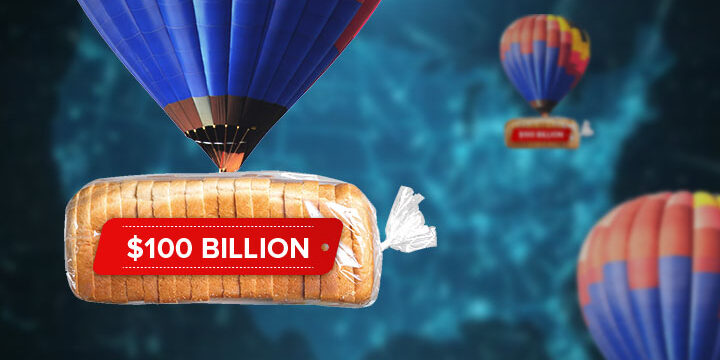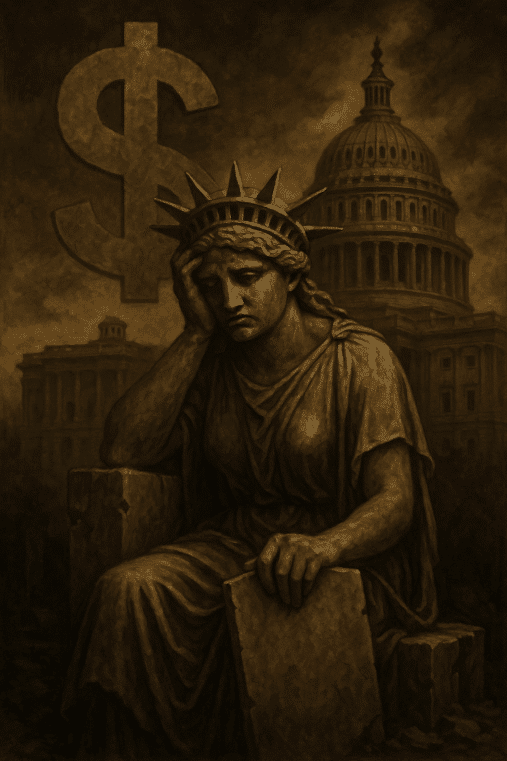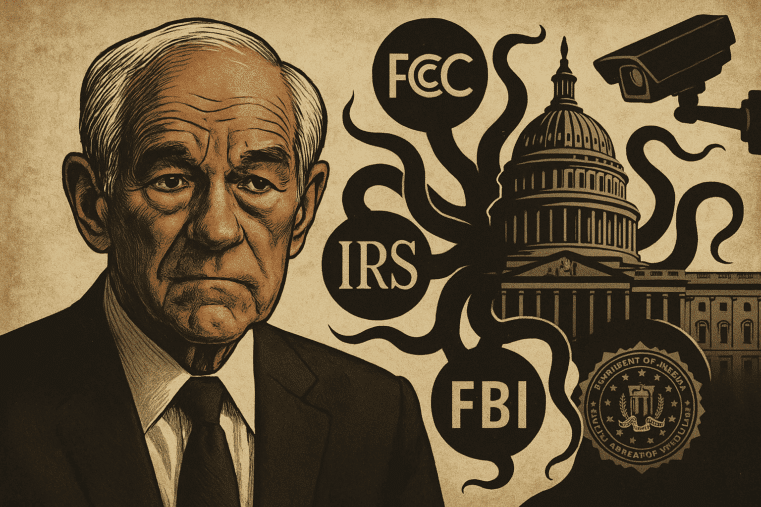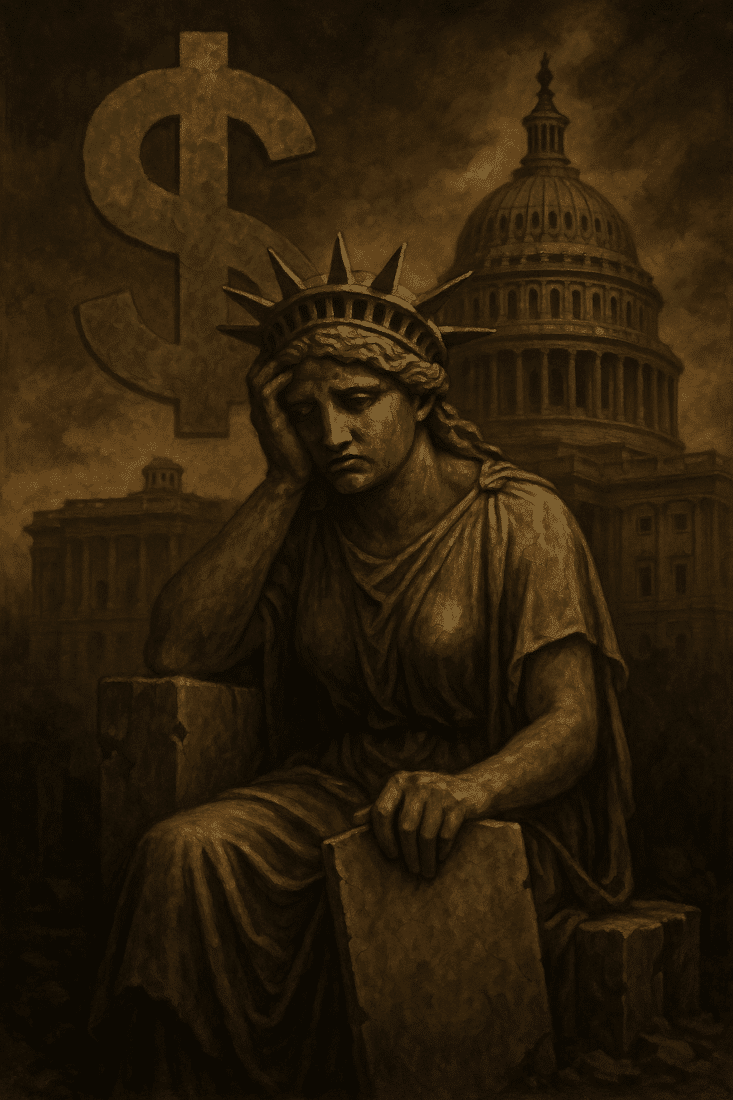
What to Expect If Hyperinflation Takes Hold in the US
We are all familiar with the variations of George Santayana’s maxim “those who cannot remember the past are doomed to repeat it.”
It’s perhaps a bit easier to follow this advice on a personal level, but as a society, not only are the events that make up the “past” much more complex—as it includes events threading through the multiple social, economic, and political realms—but history is often comprised of events reduced to “facts” that many haven’t actually “lived.”
Let’s go back to an event that most of us don’t remember. Hyperinflation in 1920’s Germany.
The gold standard had already been suspended. Kaiser Wilhelm II and the parliament decided to fund World War I solely through debt rather than income tax, betting that they would recoup the funds after securing a victory which, as we know, would never materialize.
Faced with huge debts after the Great War, Rudolf von Havenstein, president of the Reichsbank, decided to print money; a plan which backfired, leading Germany into a state of hyperinflation, a devastating factor that brought about economic collapse and political destabilization.
To fully appreciate what this meant for Germany—to grasp the meaning of the massive numbers and its impact on the reality of its citizens—UBS’ Art Cashin’s narrative provides a pointed illustration of the account:
"So, on this day government officials decided to bring figures in line with market realities. They devalued the mark. The new value would be 2 billion marks to a dollar. At the start of World War I the exchange rate had been a mere 4.2 marks to the dollar. In simple terms you needed 4.2 marks in order to get one dollar. Now it was 2 billion marks to get one dollar. And thirteen months from this date (late November 1923) you would need 4.2 trillion marks to get one dollar. In ten years the amount of money had increased a trillion fold.”
It’s important to note here the sheer size and velocity at which inflation had overrun their economy. From
- $1 = 4.2 marks…
- $1 = 2 BILLION marks…
- $1 = 4.2 TRILLION marks...
All in just a matter of a few years.
Art Cashin again:
“Numbers like billions and trillions tend to numb the mind. They are too large to grasp in any 'real' sense. Thirty years ago an older member of the NYSE (there were some then) gave me a graphic and memorable (at least for me) example. 'Young man,' he said, 'would you like a million dollars?' 'I sure would, sir!', I replied anxiously. 'Then just put aside $500 every week for the next 40 years.' I have never forgotten that a million dollars is enough to pay you $500 per week for 40 years (and that’s without benefit of interest).”
“To get a billion dollars you would have to set aside $500,000 dollars per week for 40 years.”
“And a.....trillion that would require $500 million every week for 40 years. Even with these examples, the enormity is difficult to grasp.”
What would have this looked like if the same scenario had happened in the US?
These numbers are hard for anyone to grasp, so Cashin provides an easier example using a loaf of bread denominated in US dollars.
- 1914, a loaf of bread = $0.13
- 1916, a loaf = $0.19
- 1918, a loaf = $0.22
- 1919, a loaf = $0.26
...and then hyperinflation takes hold...
- 1920, a loaf = $1.20
- 1921, a loaf = $1.35
- 1922, a loaf = $3.50
- 1923, a loaf = $700
- 1923 + 5 months, a loaf = $1,200!
- 1923 + 8 months, a loaf = $2,000,000!
- 1923 + 9 months, a loaf = $670,000,000!!
- 1923 + 10 months, a loaf = $3,000,000,000!!!
- 1923 + 10 months + 2 weeks, a loaf = $100,000,000,000!!!
At the end of 1923, a loaf of bread would cost each family $100 BILLION dollars. Everything by that point would have collapsed.
When all of this unfolded in 1920’s Germany, citizens had to bring in wheelbarrows of banknotes to pay for goods. Eventually, banknotes were so useless that they were given to children as playthings, considering that the notes themselves were significantly cheaper than toys. If you were to have spent the day at a restaurant, you would have seen waiters climbing over tables to post new menu prices every 30 minutes!
When monetary policy goes unchecked, the purchasing power of a currency begins weakening and the price of goods start to rise.
We are already seeing this, and the Fed has openly admitted that they don’t quite understand the root cause behind some of the inflationary figures they have encountered.
If hyperinflation begins to rear its ugly head in the US, here’s what to expect:
- Gold prices will skyrocket: With the dollar’s “promissory” value sinking, gold’s “intrinsic” value will maintain itself (remember, there was a point in time when gold and silver served as the backing value for paper currencies across most of the developed world). As more people flock to gold, it’s demand will surge, pushing its “price” value upwards.
- Silver will also soar: Even at its current prices, gold makes for a sound store of wealth but an impractical means of exchange for smaller items. Silver will most likely be exchanged for day-to-day items, reserving gold for larger purchases.
- Cryptocurrencies may rise: digital currencies were initially created to establish a free market of exchange outside of the regulated monetary system. Cryptocurrency usage will most likely soar, as long as a digital infrastructure is in place (something that may be at risk in the event of a crisis).
- Massive food shortages: Food shortages plague just about every economic depression. When the price of goods begin to accelerate, families will begin purchasing enough food for months at a time, realizing that the price of food will soon become unaffordable, and that food itself will become increasingly scarce.
- Violence: Depressions lead to desperate conditions, the most pronounced being starvation and lack of means to earn money for goods. As basic necessities become unbearably scarce, violence may break out in both organized and spontaneous forms; typically in the form of rioting, looting, or targeted attacks--all of which can easily lead to violence.
- Global Panic: A depression in the United States can quickly spread to other economies that trade with the US, particularly for those whose international transactions are dollar-denominated. This will invariable cause panic in various nations across the globe.
So how likely is the US to experience hyperinflation and the ensuing economic collapse? Despite the raging bull market that seems to be distracting even the smartest of investors, is our economy really more resilient than it was prior to the 2008 financial crisis?
Time will tell. But wouldn’t it also be wise to prepare for the worst?
Remember: the dollar’s promissory value is relative to the value of its promise.
But the intrinsic value of gold and silver is the closest thing you’ll ever have to “absolute” value in the realm of monetary exchange.













